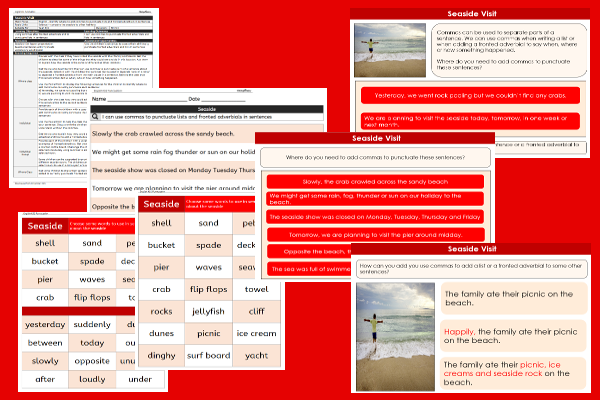Seaside Visit

This English teaching pack for Key Stage Two gets the children to identify and record where to add commas to punctuate lists and fronted adverbials in sentences about what might happen during a family visit to the seaside.
The class can select the matching vocabulary to specify when, where or how different things happened at the seaside such as swimming in the sea and building a sandcastle.
Download this teaching pack including a lesson plan, classroom activities and an interactive presentation to identify and record where to add commas to punctuate lists and fronted adverbials in sentences about what might happen during a family visit to the seaside
Activities in this teaching pack include a worksheet to record how to use commas to punctuate fronted adverbials and lists in sentences and differentiated templates to select matching vocabulary words to use in different sentences about visiting the seaside.
The interactive presentation gets the children to explore where to add commas to punctuate lists and fronted adverbials in sentences about a family visit to the seaside.
This lesson is part of an English scheme of work to get the children to identify and record how to use fronted adverbials to indicate where, when or how things happened in sentences about family events and experiences. There are teaching activities for shared learning, differentiated worksheets to support independent learning and interactive presentations to introduce concepts and key skills.
-

Length Calculations
Practise using number calculations skills for addition, subtraction, division and multiplication when solving problems related to length measurements
-

Maths Calculations Assessment
Assess abilities in solving a range of different number problems for addition and subtraction when working with informal and formal written calculations
-

Determinant Lists
Explain and model how to make lists of objects used and found in different locations to match the correct determinants of a and an
-

English SPAG Assessment
Assess abilities in composing sentences for fiction and non-fiction using the correct spellings, punctuation marks and grammar vocabulary phrases
